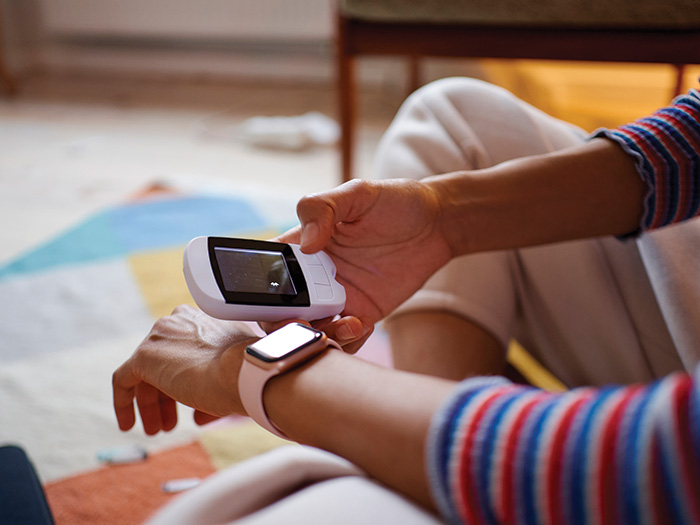Worker Wellbeing in Focus at National Comp 2021: Taking a Holistic Approach to Injured Employee Care

For years, Andrea Buhl worked as a nurse in a burn unit, caring for patients who suffered severe burns while at work.
“I had the opportunity to witness different levels of engagement of employers from the perspective of the injured worker. I saw that when employers found a job for their employee to return to post injury, it allowed these burn victims to feel like they still had purpose and a place in society,” Buhl said.
“This in turn, helped speed up the recovery process of the injured worker and greatly assisted in their mental well-being when trying to assimilate back to a normal life after spending weeks, sometimes months in the hospital.”
Now as president of managed care at Sedgwick, Buhl is helping workers’ compensation programs understand how they can benefit from programs that treat injured workers holistically by emphasizing empathy and advocacy for them during an often confusing workers’ comp process.
“People don’t set out for work each day expecting to have an injury,” Buhl said.
“When an injury does occur, the burden can seem overwhelming. I believe it’s important for those of us in the industry to have a clear understanding of the challenges that exist within the current system so that we can mitigate those challenges and bring a better experience to our employees.”
Buhl will be speaking about her experiences working with employers to adopt advocacy based approaches to claims during the National Workers’ Compensation and Disability Conference (National Comp) session “Worker Wellbeing 360°: Taking a Holistic Approach to Injured Employee Care and Recovery.”
The session will look at how placing less emphasis on cost reduction and prioritizing employee experience can help workers’ comp programs produce better recovery outcomes while saving money. Panelists will discuss how claims philosophy, employee engagement, comorbidities, psycho-social issues, and pain management affect recovery.
Building A Holistic Model from the Ground Up
Prioritizing empathy for injured workers over cutting costs has long been a topic of interest in workers’ comp.
Previous conference sessions have examined how the biopsychosocial care model and the injured worker advocacy movement have produced better outcomes for injured workers.
But few have examined the issue of how to build an empathy-based program from the ground up. The National Comp session will examine this issue from the perspective of employers, workers’ comp professionals and care providers in order to give attendees a 360° view of how to create and implement an advocacy based program.
One of the panelists, Tara Acton, director claims and counsel for Lumen Technologies Inc., will share how her company remade their workers’ comp program with empathy and advocacy at the fore.
Lumen adopted a worker-centric approach to care by adding a dedicated claims advocate to its team in 2016.
The claims advocate makes contact soon after the claim is filed. She then helps injured workers with any challenges that arise throughout the workers’ compensation process.
“We feel that the shift in approach improved the injured workers’ experience, returned employees to work faster, and reduced litigation,” Acton said.
Since adding the claims advocate to its program, Lumen has seen the average number of days a claim is open drop from 92 to 80 days. The company’s claims litigation rate for news has also dropped from 5.6% to 2.6%.
“The real evidence of the advocate’s impact has been the compliments from our employees … They share that it feels great to know Lumen cares about them,” Acton said.
“One employee, who was off work for 200 days, called when he returned to full duty, to thank the advocate for all the help she provided him and his wife through the claim process.”
How Technology Can Aid in a Biopsychosocial Approach
The session will take a modern approach to discussing injured worker advocacy by looking at how data analytics, telehealth and other technologies can be used to support employees while they’re recovering.
In this portion of the session, Buhl will detail how Sedgwick has worked with employers to examine their data to identify opportunities in their programs and create custom solutions for them.
“After identifying the challenges that they and their employees face, often with the help of our data, we’ve partnered in developing innovative new services including things like nurse advocates, 24/7 nurse triage, specialized case management including surgery nurse and behavioral health as well as customized return to work programs,” Buhl said.
The session would be remiss if it did not touch on how technology has become ubiquitous in workers’ comp since the onset of the COVID-19 pandemic.
Forty-six percent of patients say they use telehealth for some doctor’s visits, compared to only 11% in 2019, McKinsey reported.
Telehealth and other health care technology platforms can help keep claims moving forward by ensuring that an injured worker has access to care wherever they may be. This proved critical during the pandemic when many injured workers had to engage telerehab programs in order to continue recovering.
“Acceleration in delivery can be accomplished by utilizing health care technology platforms to support advocacy,” said panelist Anas Al-Hamwi, senior director, Walgreen Company.
“Leaning on telehealth solutions, virtual care platforms and other medical technologies can improve clinical outcomes.”
Though panelists will discuss how technology can aid in injured worker advocacy, panelists emphasize that employers can still start on the road to cultivating empathy within their programs without additional technological investments.
“I don’t think you need specific tools or technologies to implement this approach,” Acton said.
“It’s really making the decision to think differently about the workers’ compensation system and how your company is going to approach its injured workers. It’s changing word choices and labels to make it less confrontational … It’s about putting care for people front and center.” &
 National Comp — the National Workers’ Compensation and Disability Conference — is back! We’re planning an in-person show for October, 20-22, 2021 and we’re excited to see everyone while still adhering to all safety protocols set forth by local and national health authorities at the time of the event. Register today!
National Comp — the National Workers’ Compensation and Disability Conference — is back! We’re planning an in-person show for October, 20-22, 2021 and we’re excited to see everyone while still adhering to all safety protocols set forth by local and national health authorities at the time of the event. Register today!
This year, we’ll feature seven tracks — from core content on medical and pharmaceutical management, claims and return-to-work, plus new and expanded avenues to explore like risk finance and injury prevention. All of our educational sessions are chosen for their ability to deliver sound takeaways and ideas that attendees can use right now.
In the meantime, National Comp will continue bringing you free virtual, educational content through our digital sessions series and our CompTalks program. Register today to make sure you don’t miss a digital session and check out our on-demand CompTalks library. Missed a session? Watch it here on-demand.










